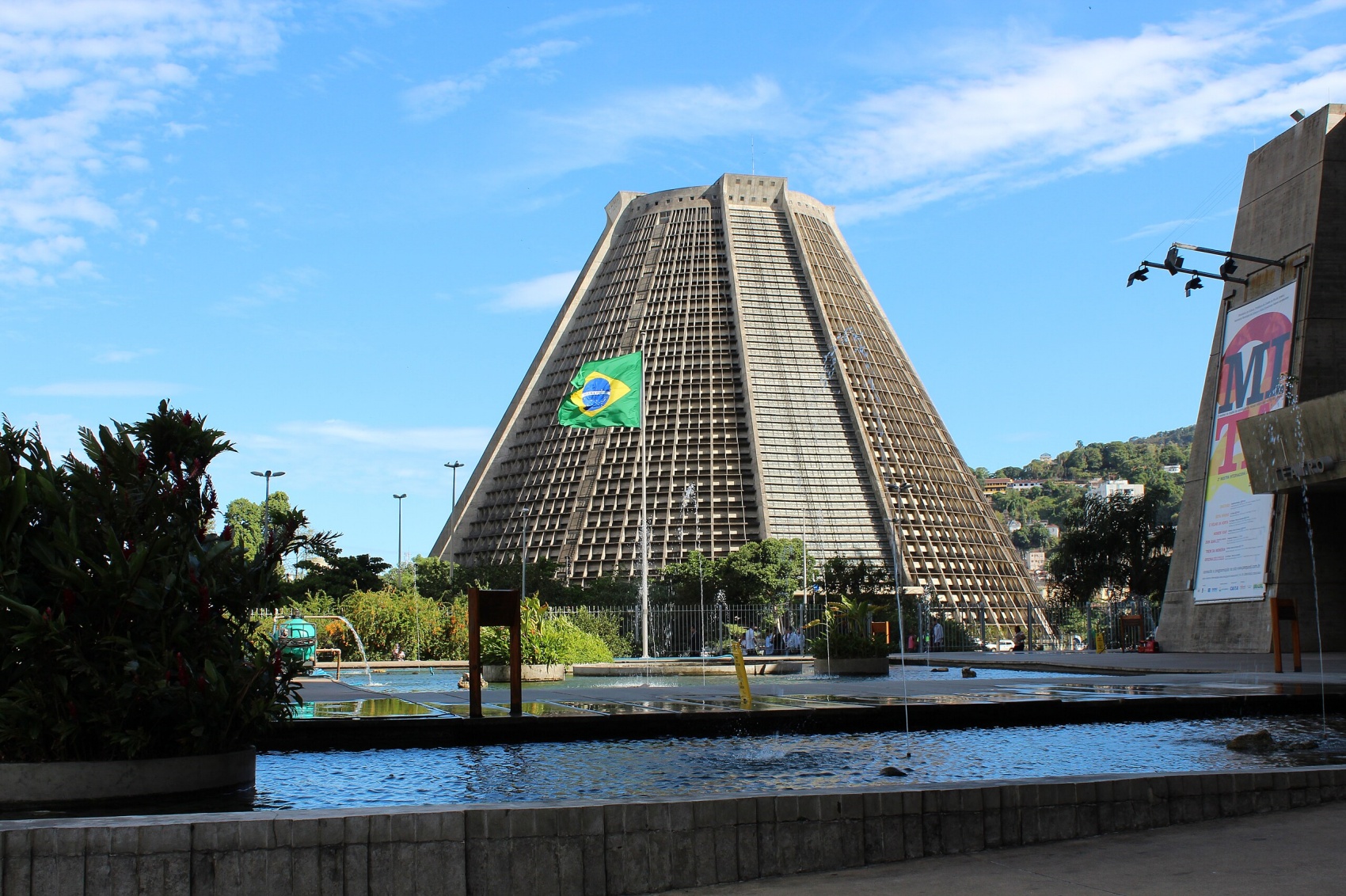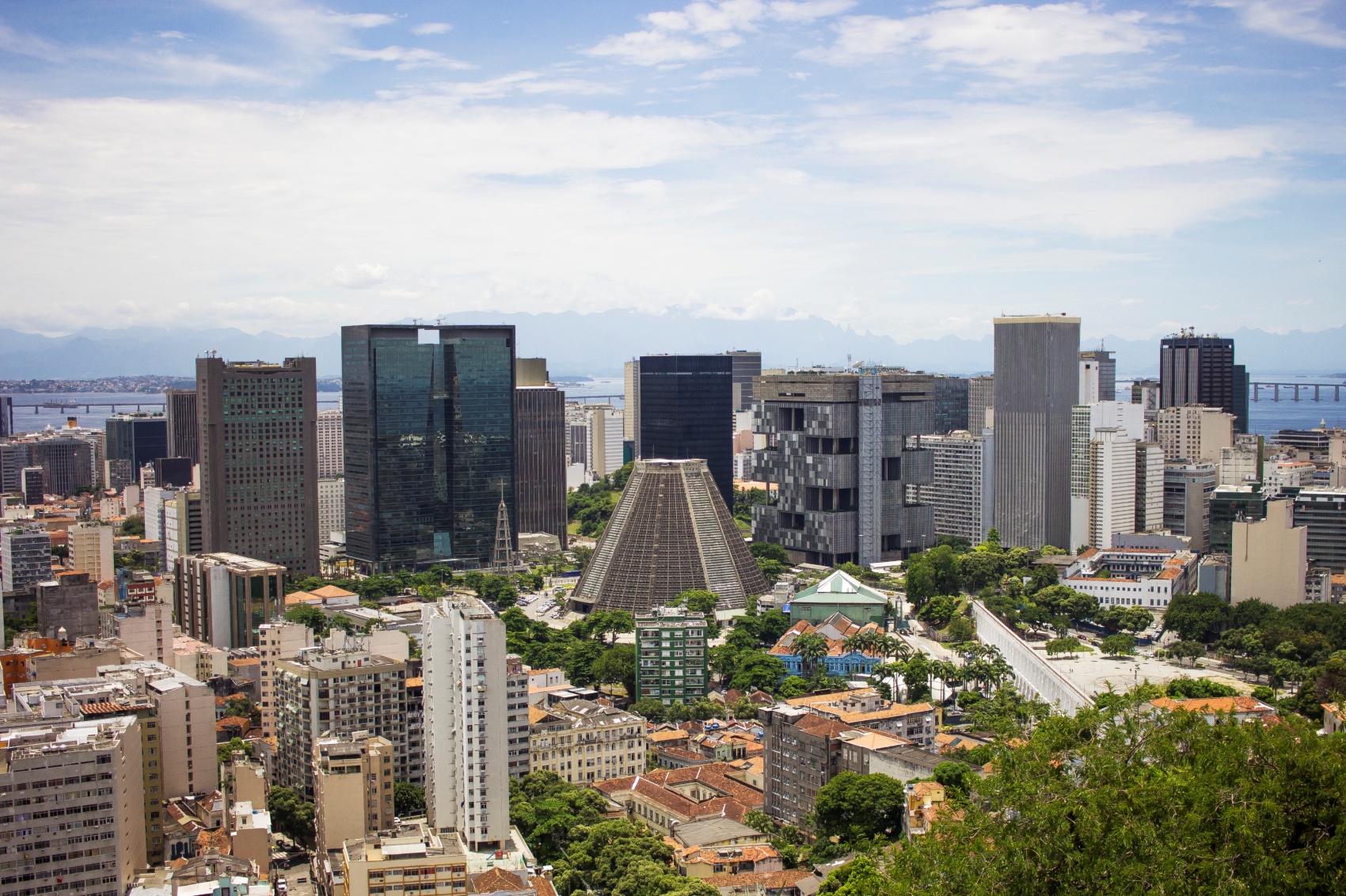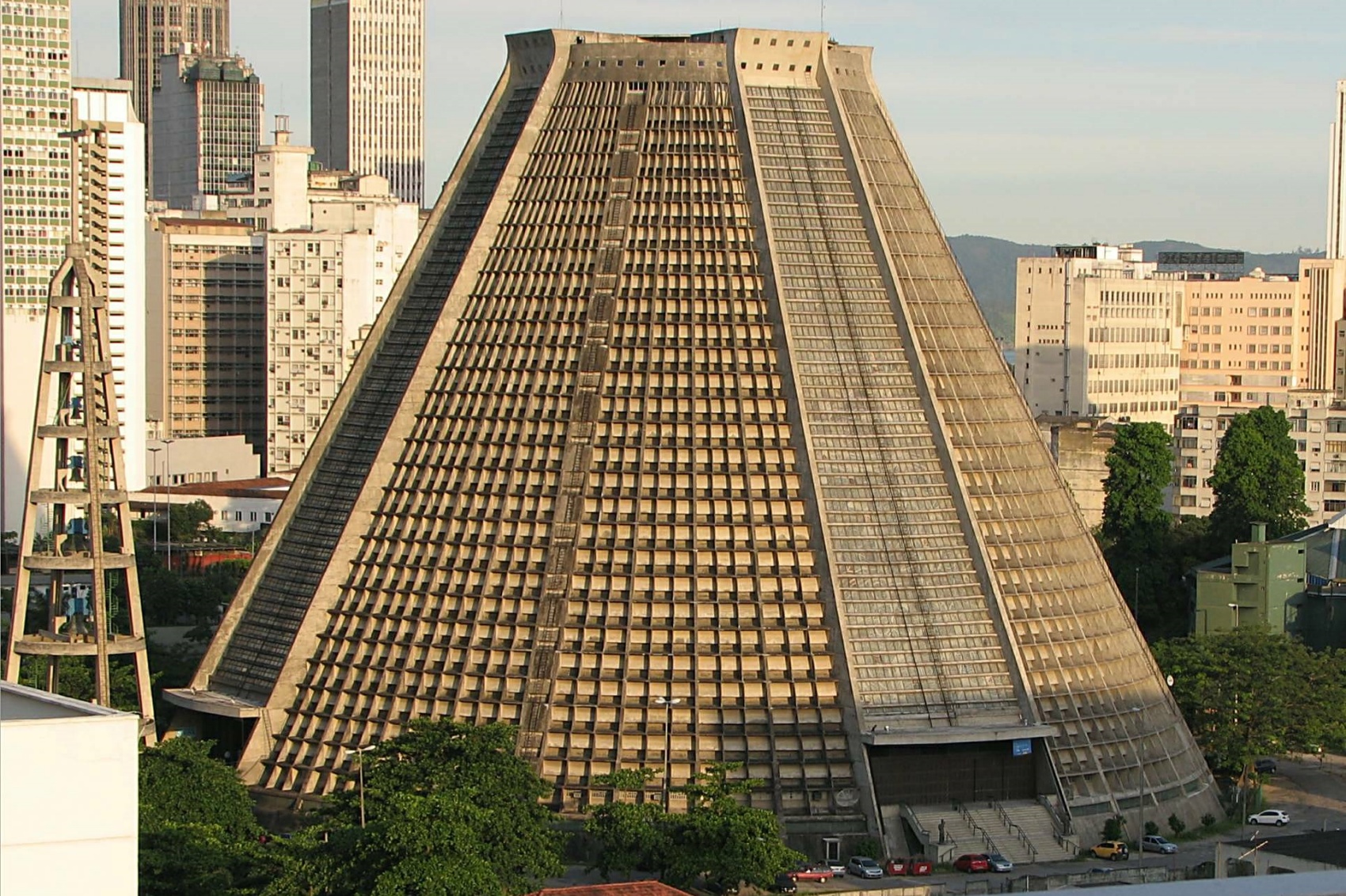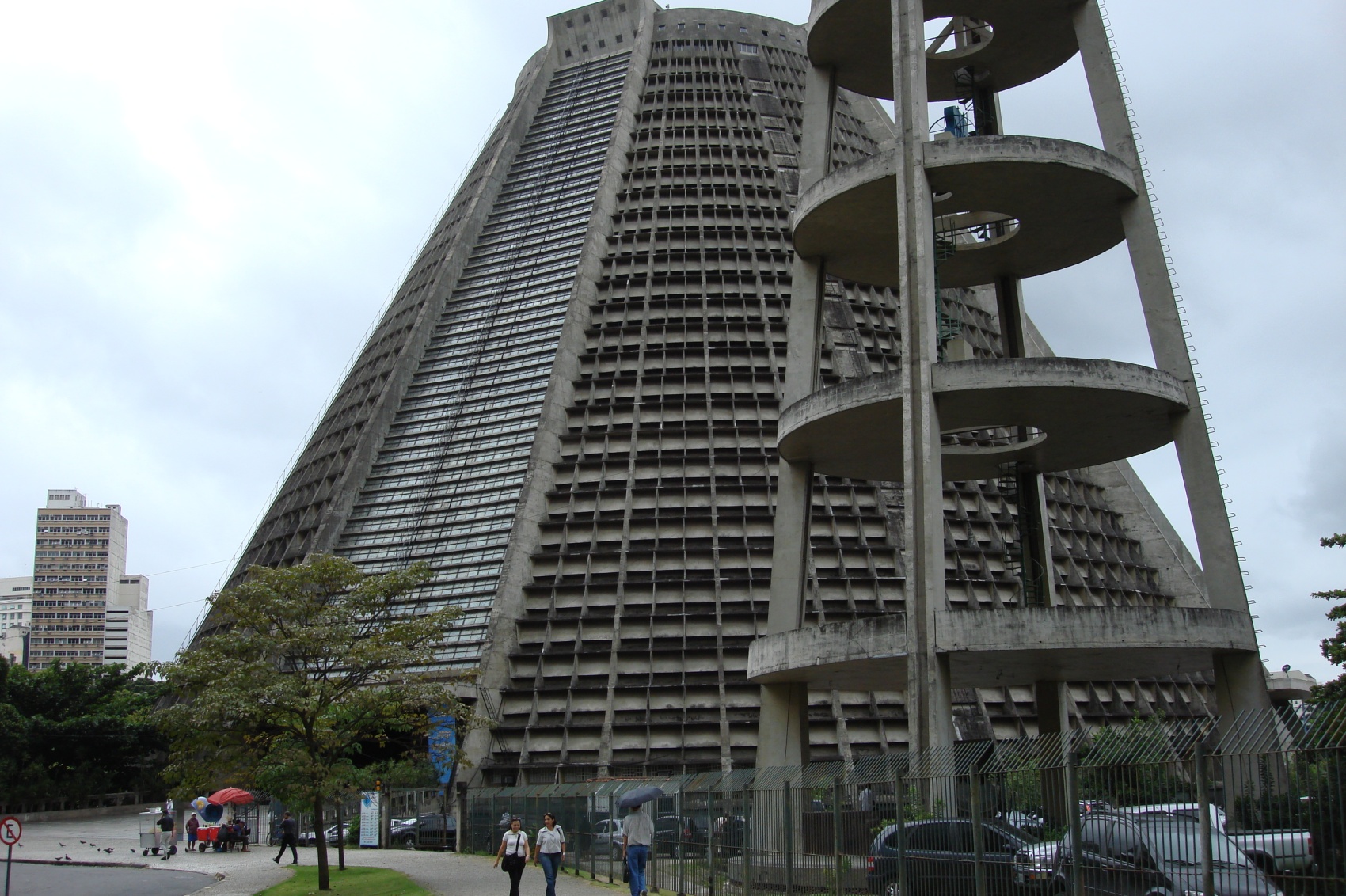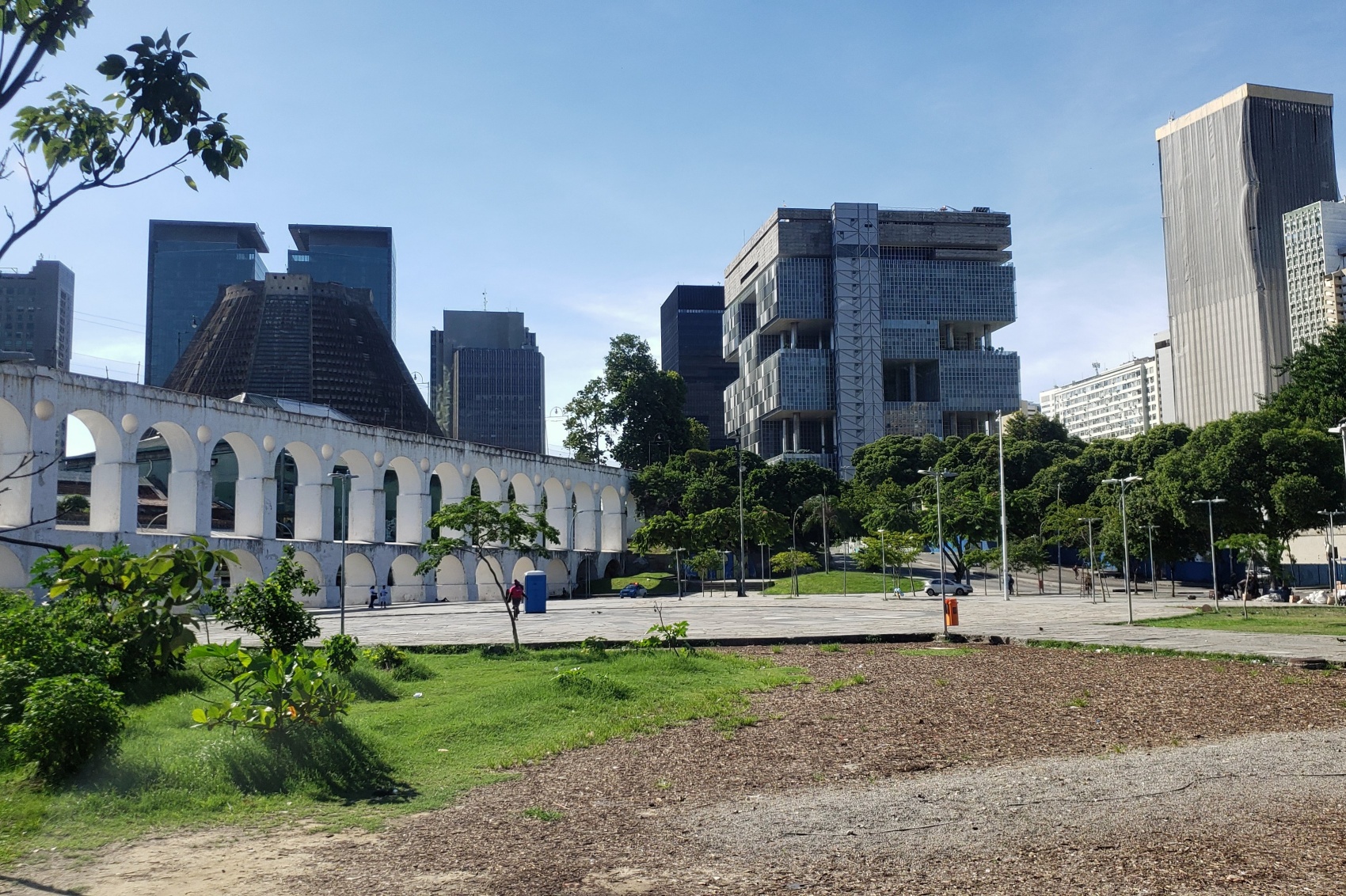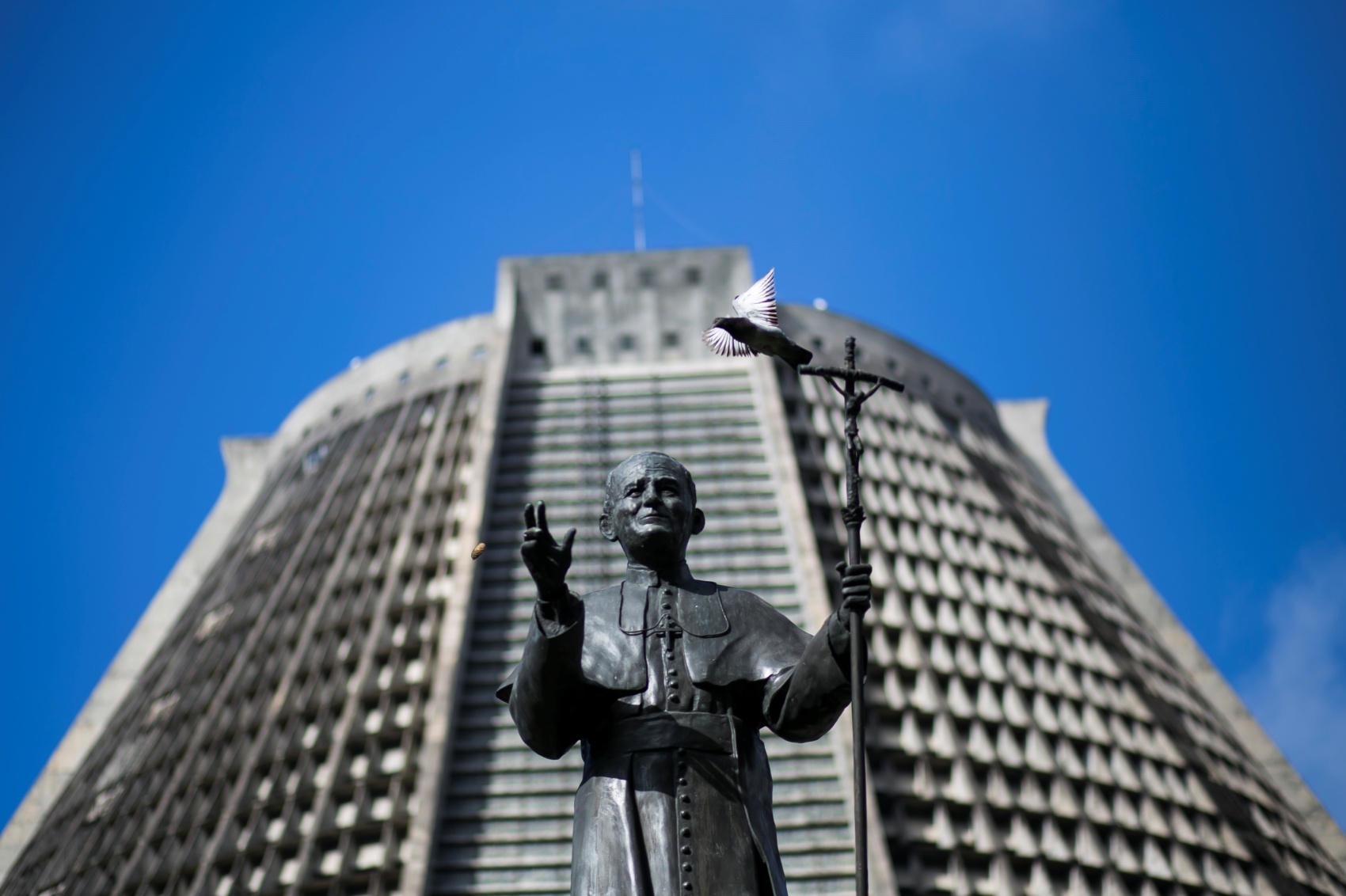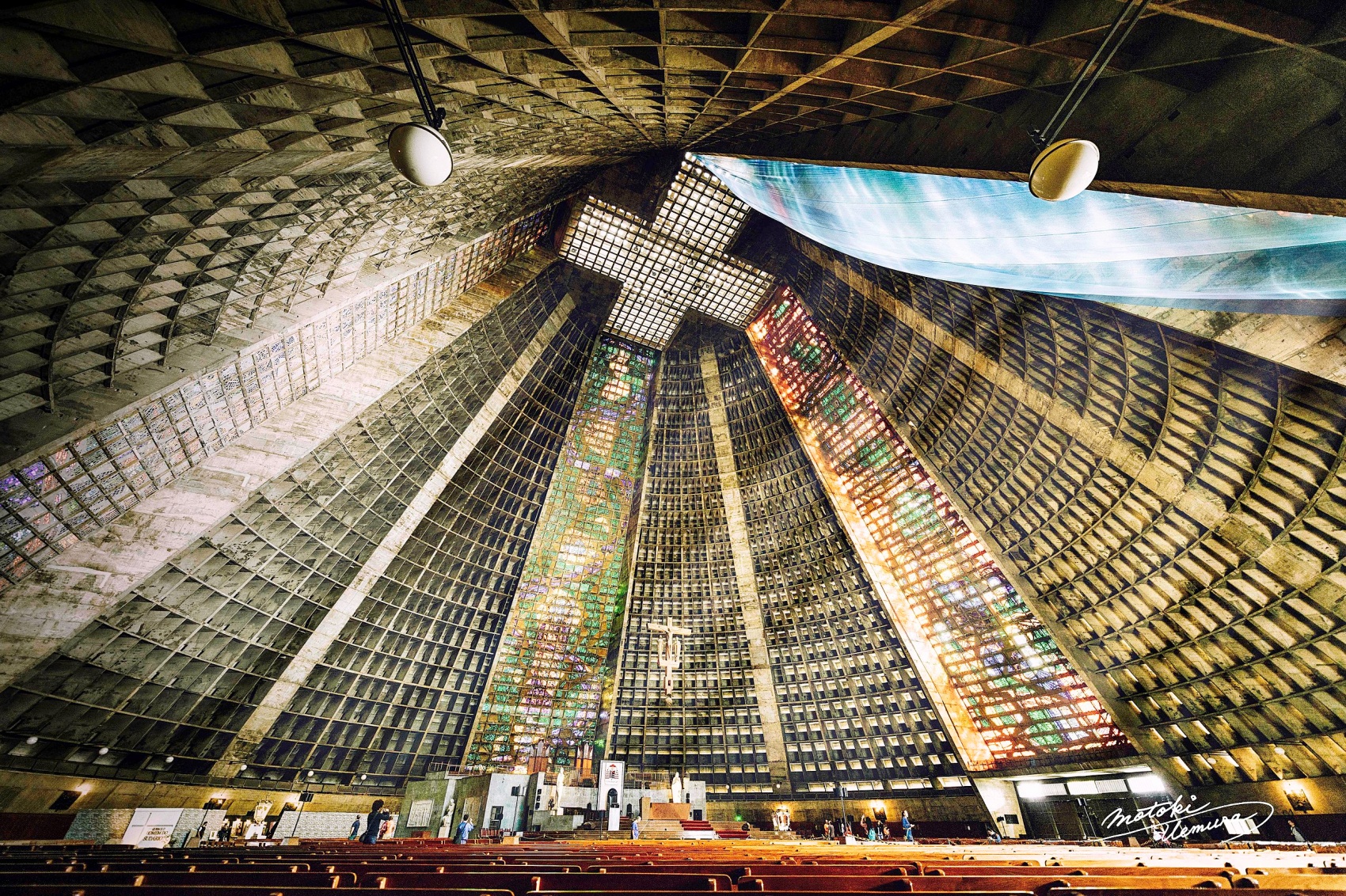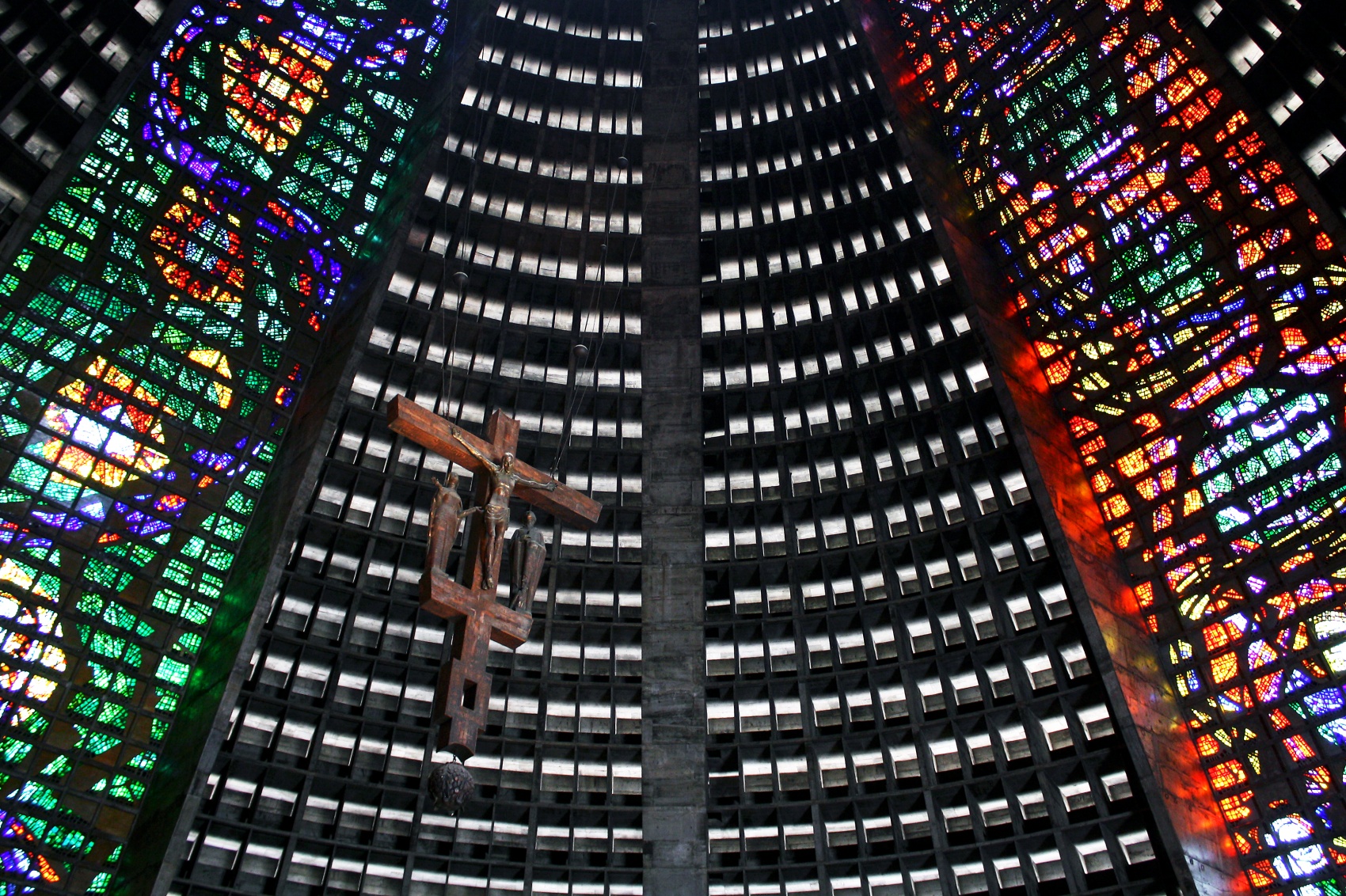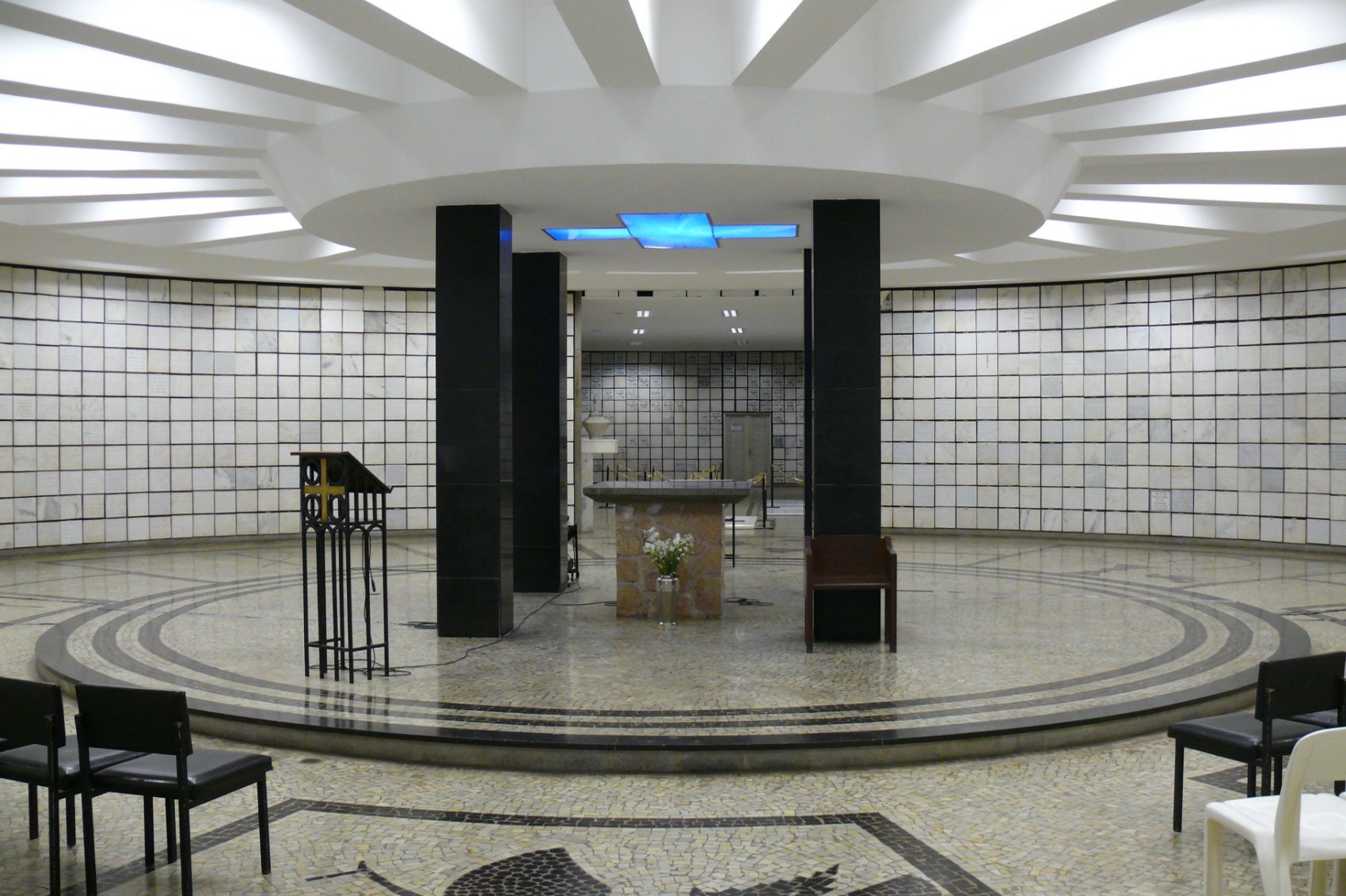The Metropolitan Cathedral of St Sebastián in Rio de Janeiro is one of the world’s most secluded churches. Designed in the 1960s, the cathedral is shaped like a grey mound and stands in the middle of the late modernist city centre. Despite its circular base, the form is meant to resemble Mayan step pyramids. Inside, the 64-metre-tall, large windows with colourful stained glass windows catch the eye.
Another temple once stood on this site. The city’s patron church replaced an 18th-century baroque cathedral. The old cathedral was the coronation site of the kings of the Portuguese dynasty and later the emperors of Brazil. The beautiful Carmelite church became too small over time to accommodate Rio de Janeiro’s growing population. The task of building a modern, capacious cathedral was given to the architect Edgar Fonseka.
Fonseca was a pupil of Brazil’s most famous architect of modernism, Oscar Niemeyer. Among other things, the architect is known for designing the country’s new capital, Brasilia. Therefore, the appearance of the cathedral is similar to other buildings in the centre of Rio de Janeiro and in Brasila. Finally, the construction of the temple was completed in 1979.
Colours of concrete
The long brutalist lines of the building expose the concrete, creating the image of a large mound or shelter. From the outside, it is a 75-metre-tall grey rhyolite building with occasional slopes of glass. Inside is the great hall. Although the walls are grey, colour is added by the stained glass on the four tall windows. The stained glass is multi-coloured, but each of the four windows has its own dominant colour. There is a green window behind the altar, a red window on the right, a blue window above the entrance and a yellow window at the end. The altars symbolise the four attributes of the Catholic Church: one, holy, catholic and apostolic. In sunlight, the interior fills with colour. Next to the cathedral, the architect still placed a skeletal bell tower.
The new church can accommodate up to 20,000 people, but the seating capacity is 5,000. A skylight in the shape of a Greek cross was placed on the ceiling. The ceiling, designed in this way, symbolises the presence of God falling upon man. When entering the cathedral, it is impossible to avoid contact with the sacred. In addition, a wooden cross hangs above the altar. The detail was suspended from steel cables.
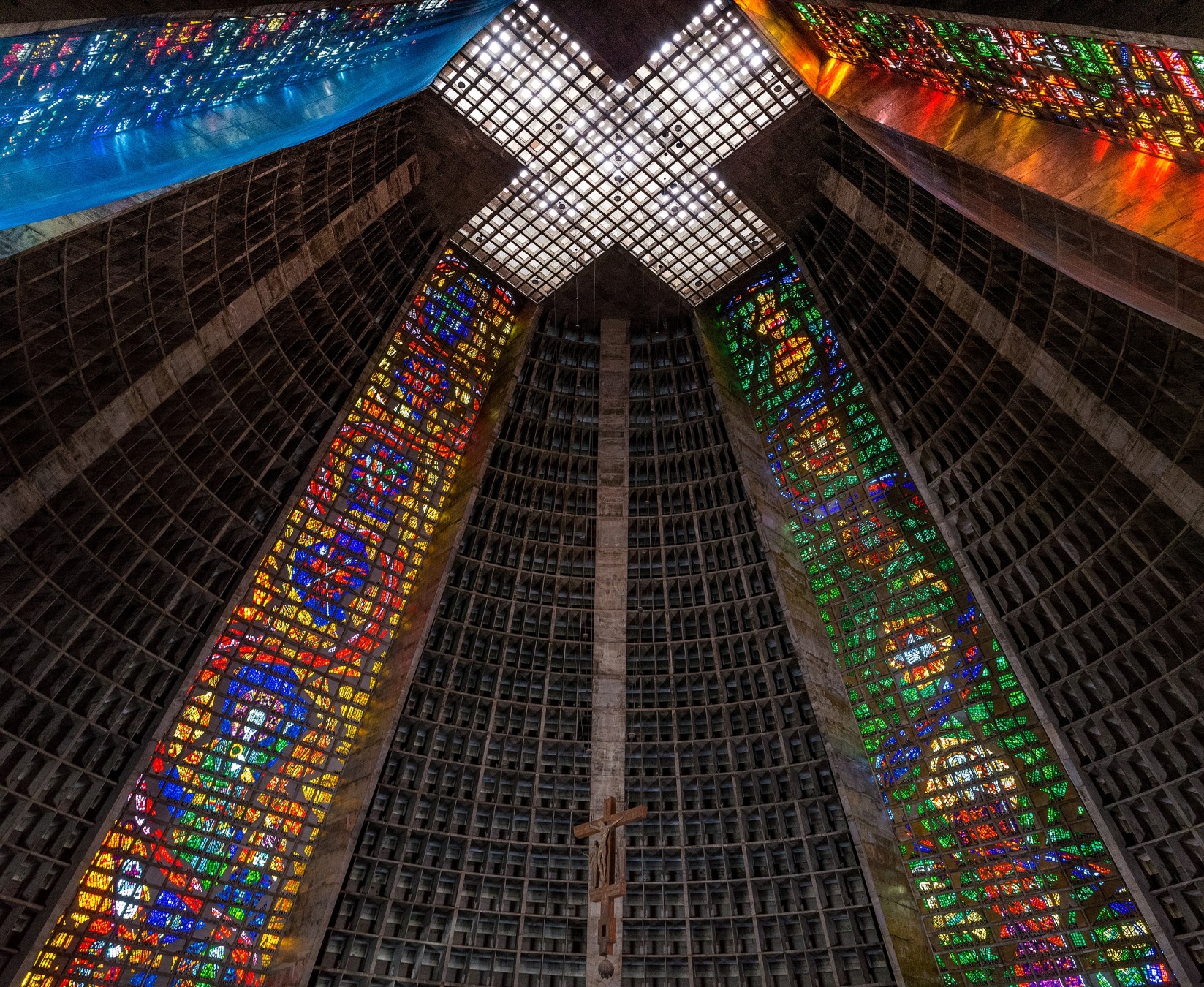
New state
The symbolism of the building is also linked to Brazilian cultural separateness. Specifically, it is about separating the colonial past associated with Portugal. The new cathedral, as well as the new capital, was meant to emphasise Brazil’s new independent era. The rule of the then president Juscelino Kubitschek was characterised by the country’s aforementioned independence and nationalism. Hence the reference to the buildings of pre-Columbian peoples.
As a matter of interest, it is worth mentioning that Pope John Paul II visited the temple in 1980. The papal visit was commemorated with a statue of John Paul II standing in front of the building.
The Cathedral Metropolitana de São Sebastião is the seal on the new centre of the new state. To this day, it is still the main church of Brazilian Catholics. The building’s unusual appearance may amaze or repel, but it is certainly a landmark around which it is impossible to pass indifferently.
Source: Cosmopolitan urbanism
Read also: Sacred architecture | Modernism | Architecture | Interesting facts | Brazil | Concrete | whiteMAD on Instagram

